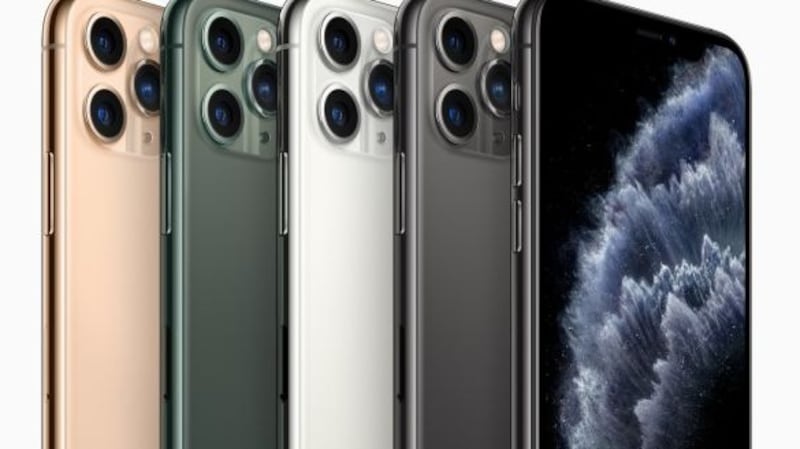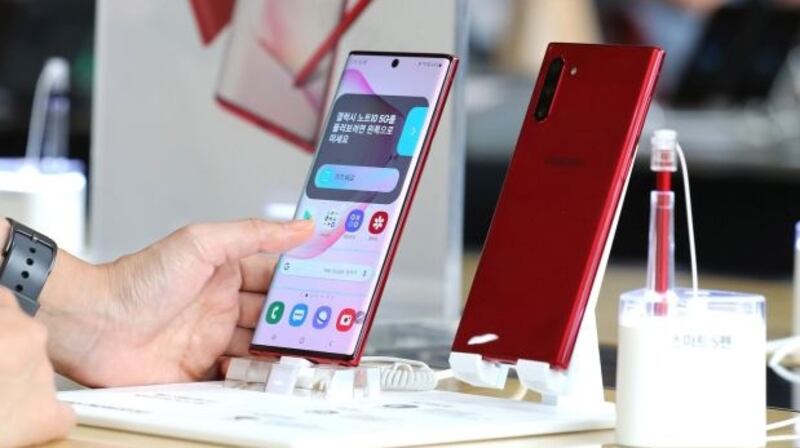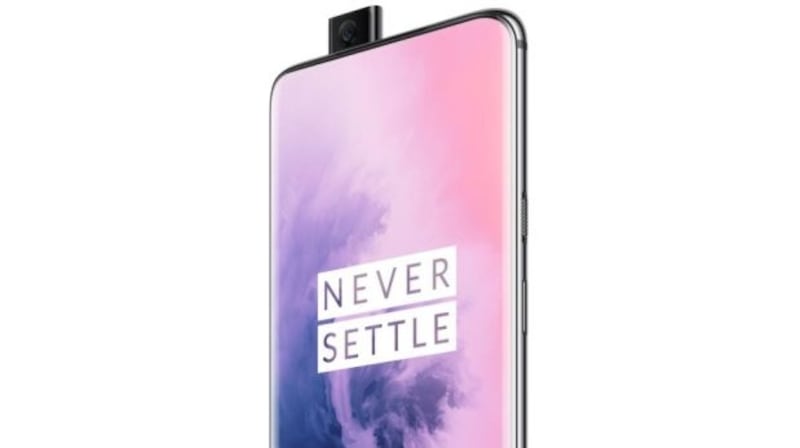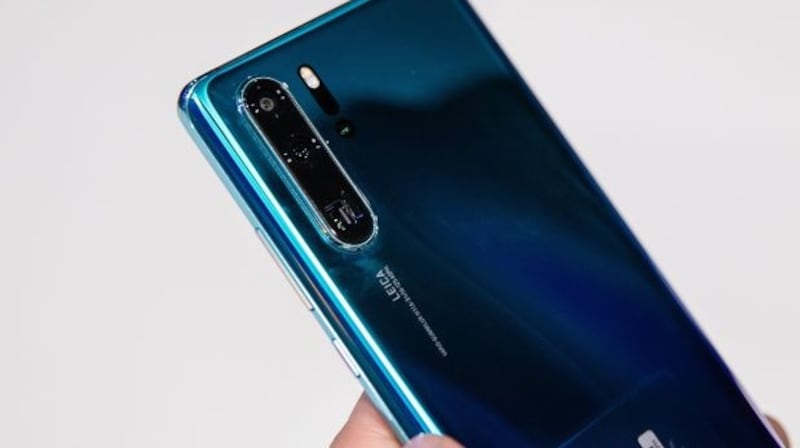They may not be cheap but the flagship smartphones do a lot. Here are a few of the best currently on offer to Irish smartphone fans – with deep pockets.

Apple iPhone 11 Pro
From €1,179
In 2019, iPhone fans were spoiled for choice, with the company opting to release three new devices – the iPhone 11, the 11 Pro and the 11 Pro Max. Our favourite was the 11 Pro, because you got all the good upgrades – the triple camera, new chip, better battery life – in a more compact package than the 11 Pro Max, which has a 5.8 inch screen.
The crucial difference between the iPhone 11 Pro and the previous iPhone Xs is the third camera Apple has included, the ultra-wide lens that lets you zoom right out and capture more of the surrounding world in a single frame. Night mode has been improved; it’s automatic, once the light drops below a certain level. The end result is brighter photos with more natural colours and not a huge amount of noise, and there is smart HDR too, which will identify the subjects in your photograph and light them in a more natural way.
The front facing camera has also been upgraded. You can take slo-mo video selfies, and improvements to the TrueDepth camera used for FaceID mean unlocking your phone is faster.
apple.com

Samsung Galaxy Note 10+
From €1,119
Once a giant among phones, the Note has really hit its stride in the past few years. The latest version, the Note 10+, has a lot going for it. A large screen – 6.4-inches this time around – plus a lot of power under the hood make the Note 10+ a good choice for Android fans.
Battery life is impressive, and Samsung’s fast charging will come in particularly useful when you need a power boost in a hurry. The S Pen is once again the star of the show, distinguishing the Note 10+ and its productivity features from the standard S10+. It is now an all-singing, all-dancing bluetooth-enabled pen that includes air gestures, so you can control your phone without having to physically touch the screen.
The camera, as usual, is great. You get great still photos, impressive video footage and some intelligent camera features. Live focus, once reserved for the still camera, has now been adopted for the video camera. You can drop the background out to black-and-white, for example, leaving the subject in colour, or blur it out to make your subject stand out.
Samsung has also gone all-out on the eye-ctching colour. Its most unusual colour is Aura Glow. It looks like chrome until the light hits it, and then you see a rainbow of different colours show up. It’s impressive, but chances are you’ll have it covered with a case.
samsung.com

OnePlus 7 Pro
From €699
What does the OnePlus 7 Pro bring to the table? There is a an edge-to-edge Amoled display that comes in at 6.67 inches with a Quad HD+ display. It’s curved too, like Samsung’s S10+, and the fingerprint sensor is under the display. The 48 megapixel, 3xz optical zoom and ultra wide angle lenses in the camera do give you some nice photographs, although night photos weren’t quite as good as rivals’. It’s the front-facing camera that makes it stand out though. While Apple and others have the notch to accommodate the front-facing camera, and Samsung has started integrating it into the screen with the Infinity-O display, OnePlus has taken a new approach altogether: a pop-up camera that appears only when you need it. That means no notch or hole punched out of the display. Fans of 4K video will like the ability to shoot in ultra high definition with the rear camera, although the videos are limited in length to 10 minutes. The pop-up camera shoots in 1080p.
Plus the OnePlus 7 Pro has a 90Hz refresh rate on the display, up from the standard 60Hz, so it looks smoother, even when just scrolling through the list of apps.
OnePlus.com

Huawei P30 Pro
From €750
Huawei's P30 Pro has to last the company for a while. With the current state of play on Google services on its handsets (none for the Mate 30 as yet) the P30 Pro is currently flying the flag for the best of what Huawei can do when Google is on board.
The company has punched above the weight of its price tag in recent years, especially with the camera. While most smartphones moved to a triple camera set up this year, Huawei brought in a quad camera for the P30 Pro and ditch the traditional RGB (red, green, blue) sensor for RYYB (red, yellow, yellow, blue) instead. The logic? Yellow absorbs more light than green. The end result means you get more light into shots in an instant. Better photos, no waiting. It also has a 5x optical zoom and 10x hybrid, but you can go as far as 50x with digital zoom.
Battery life is good, and you also get the reverse wireless charging option, so your phone doubles as a battery pack for other devices.
carphonewarehouse.ie

Google Pixel 4XL
From €899
The biggest of Google’s new smartphones, the Pixel 4XL comes with a 6.3 inch OLED display, a 90Hz refresh rate (for some features) and motion sensing features that pave the way for Google to bring Project Soli into the mainstream.
That 90Hz refresh rate makes for smoother scrolling, better looking games and video and a nicer experience overall. The caveat here though is that it is limited in what it will work with. Not all content, not all scenarios.
The camera has been improved from the Pixel 3 XL, so you can take great photos with the Pixel 4XL. Night Sight is back and better, portrait shots are nicer than before and the addition of features such as a Live HDR mode make it easier to get the shots you really want. You don’t really miss the third camera lens – the 4XL sticks with two – and there are extra features such as the ability to learn friends’ and families’ faces and take the best shots of them, such as while they are smiling and not blinking.
There is gesture control too; MotionSense allows you to wave your hand above the phone to control music and alarms.
store.google.com











